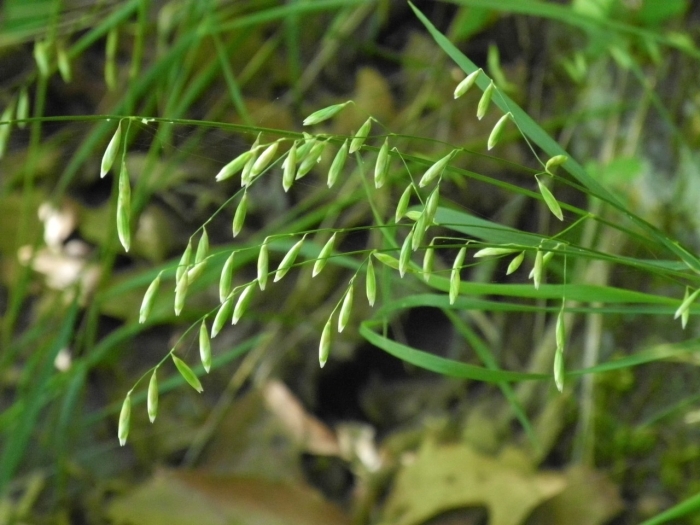Two-Flower Melicgrass
(Melica mutica)
Two-Flower Melicgrass (Melica mutica)
/
/

Michael J. Papay
CC BY 4.0
Image By:
Michael J. Papay
Recorded By:
Copyright:
CC BY 4.0
Copyright Notice:
Photo by: Michael J. Papay | License Type: CC BY 4.0 | License URL: http://creativecommons.org/licenses/by/4.0/ | Rights Holder: Michael J. Papay | Publisher: iNaturalist | Date Created: 2021-04-26T08:42:46-07:00 |

























Estimated Native Range
Summary
Melica mutica, commonly known as Two-flower Melicgrass, is a perennial, caespitose grass native to open woodlands, grassy slopes, and meadows in the southeastern United States. It typically grows 18-39 inches tall and features elongated rhizomes. The plant has tubular, scaberulous (slightly rough) leaf-sheaths and conduplicated (folded lengthwise) or flat leaf-blades. The open, lanceolate (lance-shaped) panicle is 2-6 inches long, bearing fleshy, oblong flowers that are not particularly showy but have a subtle charm. Two-flower Melicgrass is appreciated for its naturalistic appearance and is often used in restoration projects, native plant gardens, and informal settings where a meadow-like aesthetic is desired.
In cultivation, Two-flower Melicgrass is valued for its adaptability to a range of soil types, though it prefers well-drained soils. It is drought-tolerant once established and can thrive in both full sun and part shade conditions. This grass is relatively low-maintenance, requiring minimal care once established in a suitable location. It is not known for any significant disease or pest issues, making it a reliable choice for gardeners seeking a hardy native grass. However, it is not commonly found in the horticultural trade, so interested gardeners may need to seek out specialty native plant nurseries.CC BY-SA 4.0
In cultivation, Two-flower Melicgrass is valued for its adaptability to a range of soil types, though it prefers well-drained soils. It is drought-tolerant once established and can thrive in both full sun and part shade conditions. This grass is relatively low-maintenance, requiring minimal care once established in a suitable location. It is not known for any significant disease or pest issues, making it a reliable choice for gardeners seeking a hardy native grass. However, it is not commonly found in the horticultural trade, so interested gardeners may need to seek out specialty native plant nurseries.CC BY-SA 4.0
Plant Description
- Plant Type: Grass
- Height: 1.5-2.5 feet
- Width: 0.5-1 feet
- Growth Rate: Moderate
- Flower Color: N/A
- Flowering Season: Spring
- Leaf Retention: Semi-deciduous
Growth Requirements
- Sun: Part Shade
- Water: Medium
- Drainage: Medium, Fast
Common Uses
Low Maintenance
Natural Habitat
Native to open woodlands, grassy slopes, and meadows in the southeastern United States
Other Names
Common Names: Two-Flower Melic, Oniongrass, Pinyon Melicgrass
Scientific Names: , Melica mutica, Lolium canadense, Lolium canadense, Lolium temulentum var. canadense, Melica altissima, Melica diffusa, Melica glabra, Melica muehlenbergiana, Melica muhlenbergiana
GBIF Accepted Name: